Bees: Nosema ceranae
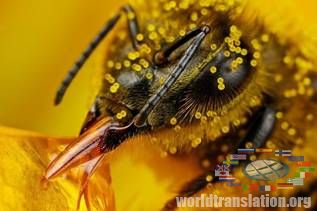
Unfortunately, sometimes appear new dangerous disease in bees and if left them untreated, they will spread rapidly. It happened with the varroa mite, which was first identified as a parasite of honey bees in 1956 in China. By our time, it has almost spread throughout the world. Nosema cerane is like long known to us Nosema apis and hardly differs from it, even under a microscope. Firstly nosema cerane was discovered in 1996 at the Asian bee ( Apis cerana), of which got its name. In 2005, the Chinese scholar Huang from Taiwan for the first time reported about finding of Nosema cerane on the honey bee. Nosema cerane danger lies in the fact that the affected families die in the second year, if they are not treated. It differs from the usual nosema with more rapid development of the parasite. In this case affected not only bees midgut, but royal jelly also becomes contagious, by which sick bees feed their larvae and each other. All this, along with the fact that development
Nosema cerane is like long known to us Nosema apis and hardly differs from it, even under a microscope. Firstly nosema cerane was discovered in 1996 at the Asian bee ( Apis cerana), of which got its name. In 2005, the Chinese scholar Huang from Taiwan for the first time reported about finding of Nosema cerane on the honey bee. Nosema cerane danger lies in the fact that the affected families die in the second year, if they are not treated. It differs from the usual nosema with more rapid development of the parasite. In this case affected not only bees midgut, but royal jelly also becomes contagious, by which sick bees feed their larvae and each other. All this, along with the fact that development 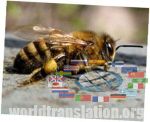 cycle of Nosema cerane is shorter, then in Nosema apis, makes this disease very dangerous. And, oddly enough, nosema caused by this pathogen usually occurs without diarrhea. In addition, in contrast to Nosema apis, which attacks the colony in the cold and wet beehive, Nosema cerane affects the family both in the dry and hot weather. There is even a suggestion that a very popular abroad topic of a meeting of bee colonies, or, as there speak, the collapse of bee colonies, is based on this disease.
cycle of Nosema cerane is shorter, then in Nosema apis, makes this disease very dangerous. And, oddly enough, nosema caused by this pathogen usually occurs without diarrhea. In addition, in contrast to Nosema apis, which attacks the colony in the cold and wet beehive, Nosema cerane affects the family both in the dry and hot weather. There is even a suggestion that a very popular abroad topic of a meeting of bee colonies, or, as there speak, the collapse of bee colonies, is based on this disease.
In December 2008, I had the opportunity to visit the largest gathering of Canadian and U.S. beekeepers in the city of Niagara Falls.
There, Dr. Mariano Higes from the regional center of beekeeping in Spain, which has been studying the Nosema cerane and capabilities to fight with it, reported data, which evoke horror. Three years ago, Nosema cerane was found only in three provinces of Spain, and in the past year almost all provinces have it. Disputes of nosema cerane unusually are resistant, they even remain alive in the litter of birds feeding sick bees. 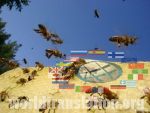 Spores are found in almost all samples of flower pollen, bought in Spain. Cited such an example: a family of bees were infected with Asian nosema, and after 4 months were infected already 66, that is 100% of bee families of apiary. Without treatment, the bee family dies in 1.5-2 years after infection. Currently the only effective way to treat this disease is a treatment with well known for the old beekeepers drug fumagillin, which is already 15 years can not be bought in Russia - it was banned. In America, fumagillin is sold and used at every step, although there is no complete cure. Just very slow progression of the disease, and the colony is able to stay alive and make marketable honey.
Spores are found in almost all samples of flower pollen, bought in Spain. Cited such an example: a family of bees were infected with Asian nosema, and after 4 months were infected already 66, that is 100% of bee families of apiary. Without treatment, the bee family dies in 1.5-2 years after infection. Currently the only effective way to treat this disease is a treatment with well known for the old beekeepers drug fumagillin, which is already 15 years can not be bought in Russia - it was banned. In America, fumagillin is sold and used at every step, although there is no complete cure. Just very slow progression of the disease, and the colony is able to stay alive and make marketable honey.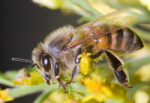 Nosema cerane found already in Germany, France, Canada and USA. While there were no reports, if the disease is found in Russia, but this does not mean that russians do not have it.
Nosema cerane found already in Germany, France, Canada and USA. While there were no reports, if the disease is found in Russia, but this does not mean that russians do not have it.
Time will tell how dangerous this disease. However, it seems that it can be as deadly for bees as varroatosis. Unlikely this will mean the death of beekeeping, but it is likely happen, what has happened during the propagation of varroatosis. Number of bee families decreased slightly, but significantly reduced the number of beekeepers, ie there will be further consolidation of apiaries. In complicate conditions primarily dying the bee families in the owners of small apiaries, for which the bees - it's just a hobby. 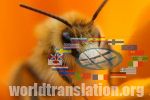 These beekeepers can not pay enough attention to improve their skills and the study the modern methods of bees diseases control. But so far, other methods of treatment, except fumagillin, are not offered. In the U.S. is recommended for beekeepers to contain only strong bee colonies, observe the rules of hygiene and sanitation in the apiary and treat all detected bees diseases.
These beekeepers can not pay enough attention to improve their skills and the study the modern methods of bees diseases control. But so far, other methods of treatment, except fumagillin, are not offered. In the U.S. is recommended for beekeepers to contain only strong bee colonies, observe the rules of hygiene and sanitation in the apiary and treat all detected bees diseases.